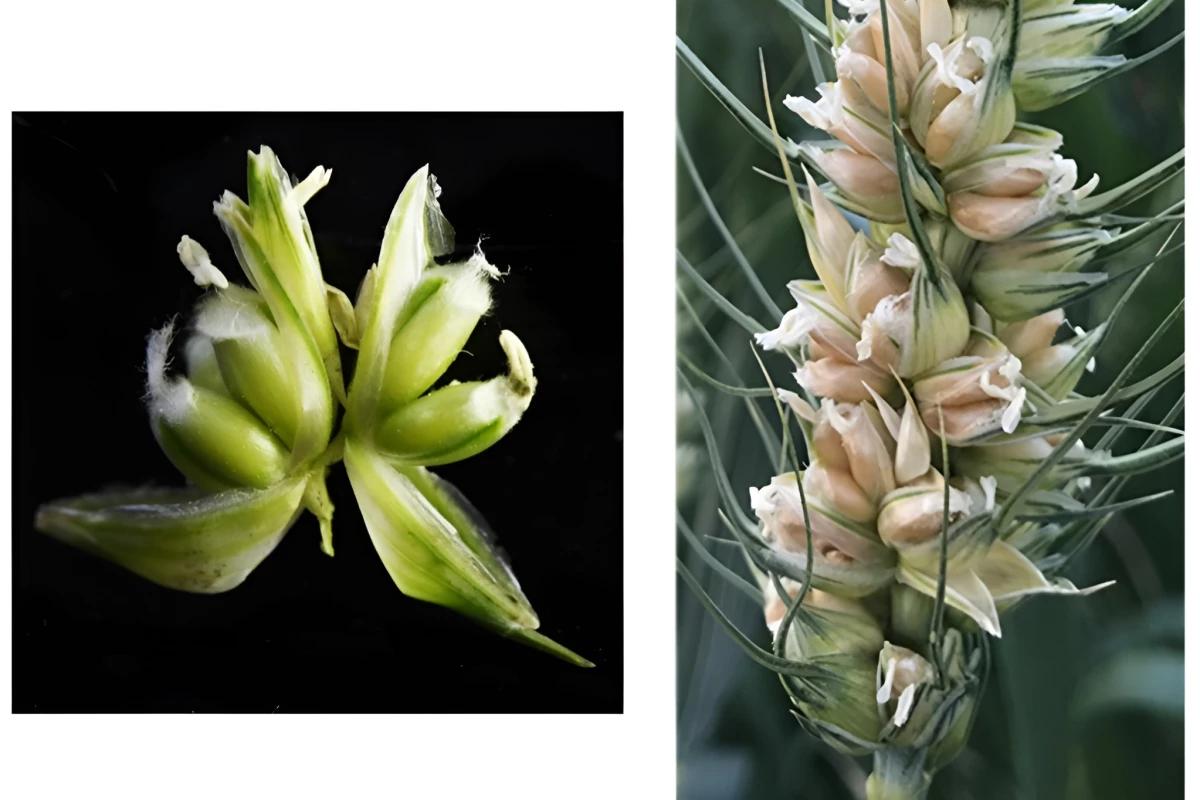Science
New Genetic Discovery Could Triple Wheat Grain Yields

A recent genetic breakthrough may allow for a threefold increase in grain yields from wheat plants while using the same resources. Researchers at the University of Maryland have identified a genetic mechanism that could significantly enhance wheat production, potentially transforming agricultural practices.
The study focuses on a unique mutation in wheat known as MOV (multi-ovary) wheat. Typically, each floret in a standard wheat plant produces a single grain from one ovary. However, the MOV variant can produce up to three ovaries per floret, leading to the possibility of harvesting three grains instead of one. Until now, the genetic basis for this anomaly was not well understood.
Through extensive DNA mapping, the researchers compared MOV wheat to regular bread wheat, seeking key differences. Their findings revealed that a previously dormant gene, known as WUSCHEL-D1 (WUS-D1), is active in MOV wheat. This gene plays a crucial role in developing additional female flower parts, such as pistils and ovaries, which contribute to increased grain production.
Implications for Wheat Breeding
According to Assoc. Prof. Vijay Tiwari, co-author of the study, activating the WUS-D1 gene in cultivated wheat could lead to higher yields. He stated, “Pinpointing the genetic basis of this trait offers a path for breeders to incorporate it into new wheat varieties, potentially increasing the number of grains per spike and overall yield.”
The research team is optimistic that with the use of advanced gene editing techniques, they can further enhance this trait in wheat. This could have significant implications for food security, especially in regions facing challenges related to agricultural productivity.
The study detailing these findings was published in the Proceedings of the National Academy of Sciences, marking a significant step forward in agricultural biotechnology. With global demands for food rising, innovations like these could be pivotal in meeting the needs of an expanding population.
In conclusion, the discovery of the active WUS-D1 gene in MOV wheat represents a promising avenue for increasing grain yields and ensuring sustainable agricultural practices. As researchers continue to explore the potential of this genetic advancement, the future of wheat production may hold exciting possibilities.
-

 Health4 days ago
Health4 days agoRare Brain Condition Discovered More Common in New Mexico
-

 Politics5 days ago
Politics5 days agoPrince Andrew Steps Back from Royal Duties Following Epstein Memoir
-

 Health5 days ago
Health5 days agoRemembering Mary Ingleby: A Life of Love, Teaching, and Music
-

 World5 days ago
World5 days agoYoung Driver Dies in Collision with Box Truck in El Cajon
-

 Sports5 days ago
Sports5 days agoMLS Decision Day 2025: Playoff Spots on the Line as Teams Clash
-

 Science5 days ago
Science5 days agoIdaho State University Launches Haunted Science Laboratory on Oct. 25
-

 Lifestyle5 days ago
Lifestyle5 days agoKent Hamilton Named Southeastern Farmer of the Year at Expo
-

 Business5 days ago
Business5 days agoFirst National Bank of Groton’s Quiet Period Ends October 21
-

 Entertainment5 days ago
Entertainment5 days agoTrump Commutes George Santos’ Sentence, Sparks Controversy
-

 Politics5 days ago
Politics5 days agoNavy Veteran Max Quattromani Launches Campaign for Assessor Seat
-

 Sports5 days ago
Sports5 days agoSaquon Barkley Reacts to James Franklin’s Dismissal from Penn State
-

 Health4 days ago
Health4 days agoScientists Warn: Human Brain Struggles to Function After Midnight









